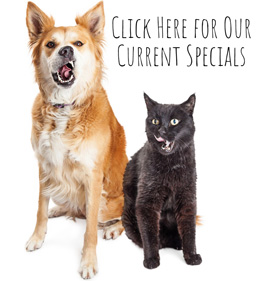In the wild, polecats (the closest relatives of the domestic ferret) feed on whole animals such as rodents and small birds. They eat everything… from head to toe.
Ferrets have a very short gastrointestinal tract and the little organisms living in it are very simple, unlike other animals that eat vegetation. This means that even if ferrets do want a piece of fruit or vegetable, they actually are incapable of digesting it!
In the wild, the only “vegetarian” items that a polecat would come across would be in their prey’s stomach (and it would be partially digested).
Due to the short gastrointestinal tract it takes only 3-4 hours for food to pass through the mouth to the bottom. This makes ferrets rather inefficient when it comes to absorbing vitamins and nutrients.
This is why a ferret’s diet needs to be made up of mostly FAT, as the main source of energy. Plus, it needs highly digestible MEAT – BASED PROTEINS.
I encourage all pet parents to be well educated on raw diets and here is a great article from a very reputable Veterinarian, Dr. Karen Becker.
https://www.ferret-world.com/news/species-appropriate-diets-a-conversation-with-dr-karen-becker/
So in this case, what is healthy ferret food?
Healthy ferret food consists of whole prey…such as mice, rats and chicks etc.
Healthy ferret food includes:
- Raw chicken necks
- A bit of raw meat (can be ground as well, but like any carnivore they have inbuilt mincers - their teeth - so it is better to give them whole chunks of meat)
- Raw egg yolks (no whites)
- Piece of raw liver or heart
- Rats
- Chicks
- Mice
Or pre-prepared frozen carnivore diets. These contain bits of lamb, beef, rabbit, chicken, etc. including ground bones, organs, muscle and fat. There should be no grains or vegetable products, sweeteners and additives.
Here are a few ground products that are good to try, along with the meat/bone/organ percentages:
- Ground Chicken/Bones/Organs 80/10/10
- Ground Duck/Bones/Organs 80/10/10
- Ground Quail/Bones/Organs 88/10/2
- Ground Rabbit/Bones/Organs 75/15/10
- Ground Turkey/Bones/Organs 80/10/10
Quick links to help you with your Ferret's Raw Diet:
- Check out our Starter Kits here: for boneless and bone in DIY
- Ice cube trays are extremely helpful in portioning out your ferret's meals. One standard ice cube is ~1 oz. Check out these trays as well which hold 3-4 oz. of raw meat per cube.
- Pyrex storage 2-cup round dishes provide a tight seal, keeping meat fresh, longer and are safe to use in the refrigerator and freezer. Each dish holds approximately 12 oz. of raw meat.
- This Pet Feeder, with ice pack included, makes feeding while you are away a little bit easier.
- Scale option.
Below are the basic guidelines for the Whole Prey Model of raw feeding for Ferrets:
75-80% - raw meat
10-15% - edible bone
10% - organ meat (half of that being liver)
Wondering how to transition? Review different methods here:
Ok, so this is healthy for the ferret, but what else do they get out of it?
The advantages of including these items in your ferret’s diet include:
- Better absorption of nutrients and vitamins – better coat and general health.
- The above, also results in less poo (because everything is better absorbed).
- Exercise for the muscles of the neck and jaw
- Clean teeth and healthy gums (the bones normally clean them while they are being chewed on)
- Mental stimulation for your ferret – It will experience different textures, tastes and the harder effort of getting through a raw meal! (it will definitely keep them occupied)
- Ferrets will not need supplements while on a raw food diet – because all the nutrients and vitamins will be coming from their wholesome food!
- True excitement when it comes to feeding time!
Courtesy of http://www.ferret-world.com/
If feeding meat/bone/organ grinds you can use the Alnutrin supplement.
Vitamins and Supplements: We offer the Alnutrin supplement for both boneless and bone in ground meats. Ferrets can also be supplemented with fish oil for omega 3 fatty acids.
Why you'll love Alnutrin Supplements:
They can be used in raw or low-fat cooked meat formulations.
They are free of ingredients from China or India. All raw materials in our supplements are manufactured in the USA, Europe or Japan.
They are made with human food grade raw materials.
Made with mixed tocopherols (read more about benefits of mixed tocopherols bellow in Vitamin E section).
They are free of controversial chemical additives like BHT, BHA, ethoxyquin and menadione.
Free of non-essential ingredients like kelp, psyllium husk, flaxseed, soy, yeast, rosemary, garlic, fruits and veggies.
They are made with amino acid chelates for better absorption of iron and copper.
Formulated to meet AAFCO nutrient profiles.
A quick how to:
I would recommend putting one of our ground packages directly into the refrigerator in a dish or Ziplock bag. Allow to thaw for 1-2 days in fridge.
Once the meat is workable, mix together with Alnutrin, water and fish oil, following the instructions on the Alnutrin bag.
- Add water first in a large mixing bowl
- Then add Alnutrin and mix those together well
- Next add fish oil (or add at mealtime)
- Then meat
Once you have mixed and portioned your food, you can create a rotation from the freezer to the fridge.
When assessing food for ferrets and balancing their diets, we refer to the "small animal nutritional guidelines" for cats.
This is a good website for nutritional info https://holisticferretforum.com/
Prefer helpful videos? Bryn Regan has a good one here: https://www.youtube.com/watch?v=Vc_Y0uA1Cio&feature=youtu.be





